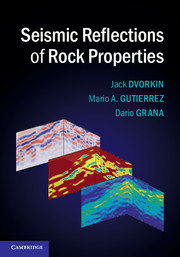Introduction
Seismic reflections depend on the contrast of the P- and S-wave velocity and density between strata in the subsurface, while the velocity and density depend on the lithology, porosity, rock texture, pore fluid, and stress. These two links, one between the rock’s structure and its elasticity and the other between the elasticity and signal propagation, form the physical foundation of the seismic-based interpretation of rock properties and conditions. One approach to interpreting seismic data for the physical state of rock is forward modeling. Lithology, porosity, stress, pore pressure, and the fluid in the rock, as well as the reservoir geometry, are varied, the corresponding elastic properties are calculated, and then synthetic seismic traces are generated.
These synthetic traces are compared to real seismic data: full gathers; full stacks; and/or angle stacks. The underlying supposition of such interpretation is that if the seismic response is similar, the properties and conditions in the subsurface that give rise to this response are similar as well. Systematically conducted perturbational forward modeling helps create a catalogue (field guide) of seismic signatures of lithology, porosity, and fluid away from well control and, by so doing, sets realistic expectations for hydrocarbon detection and monitoring and optimizes the selection of seismic attributes in an anticipated depositional setting.

